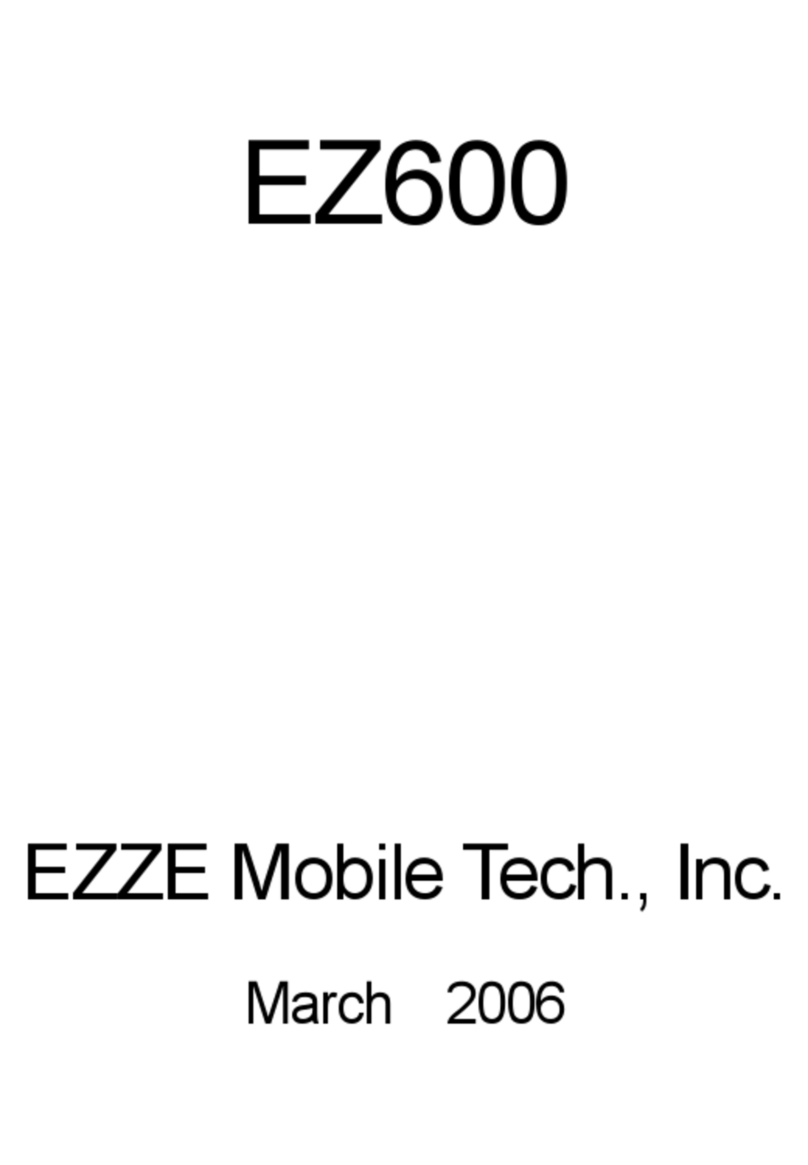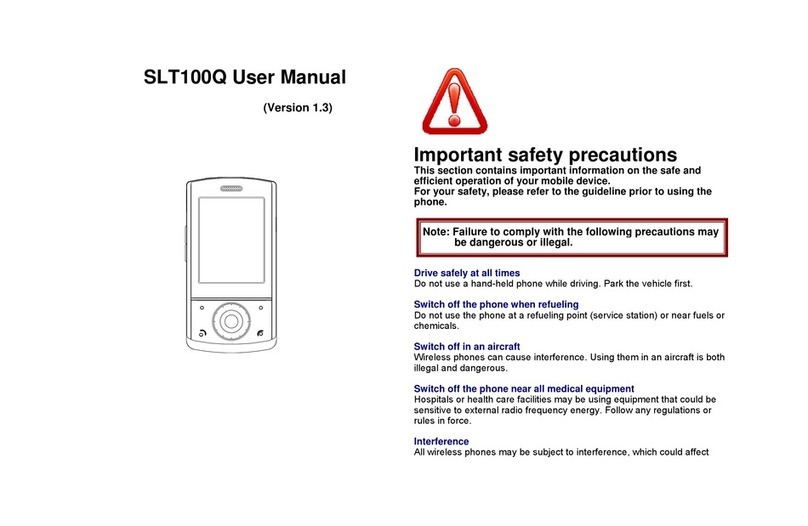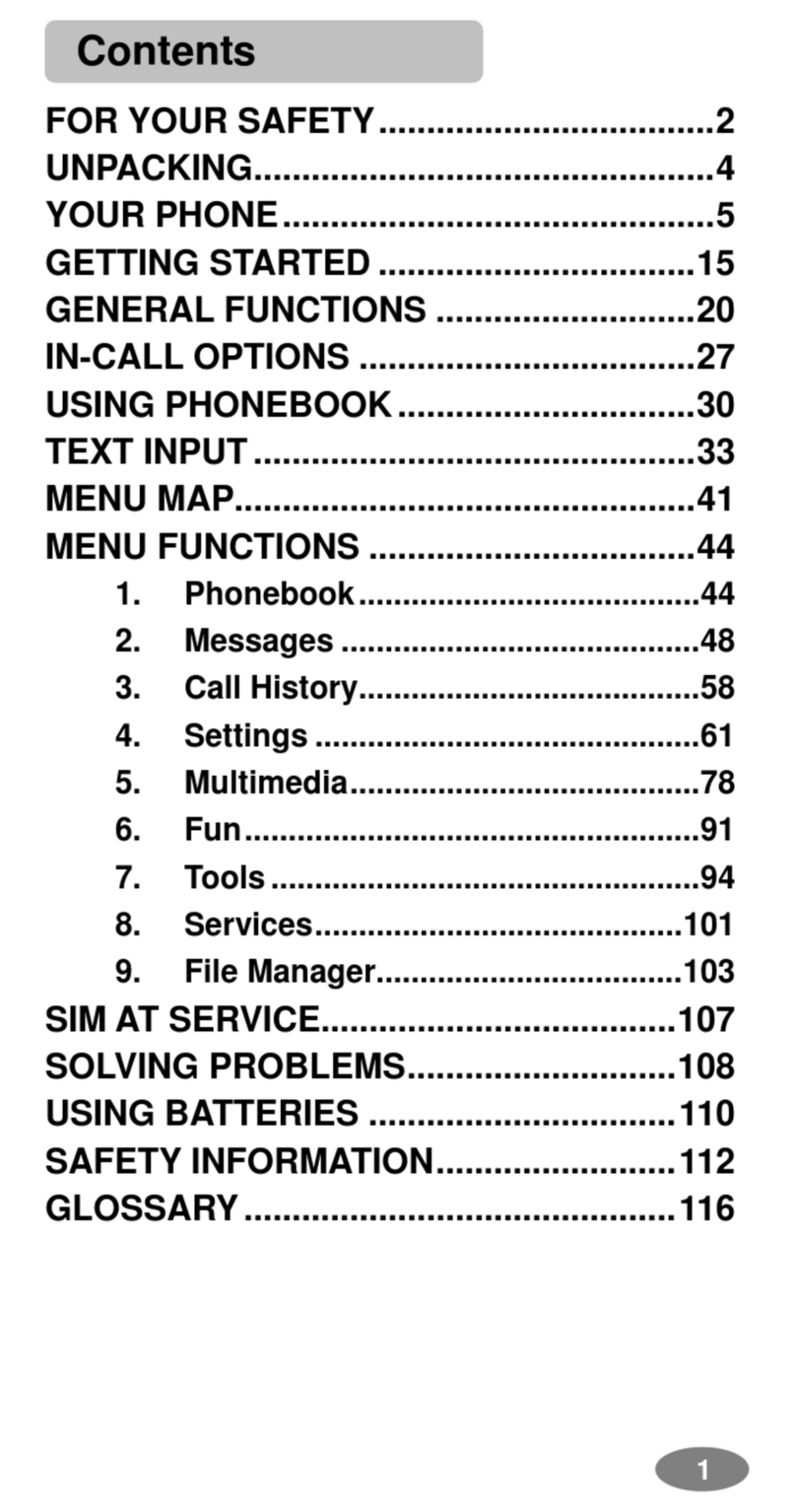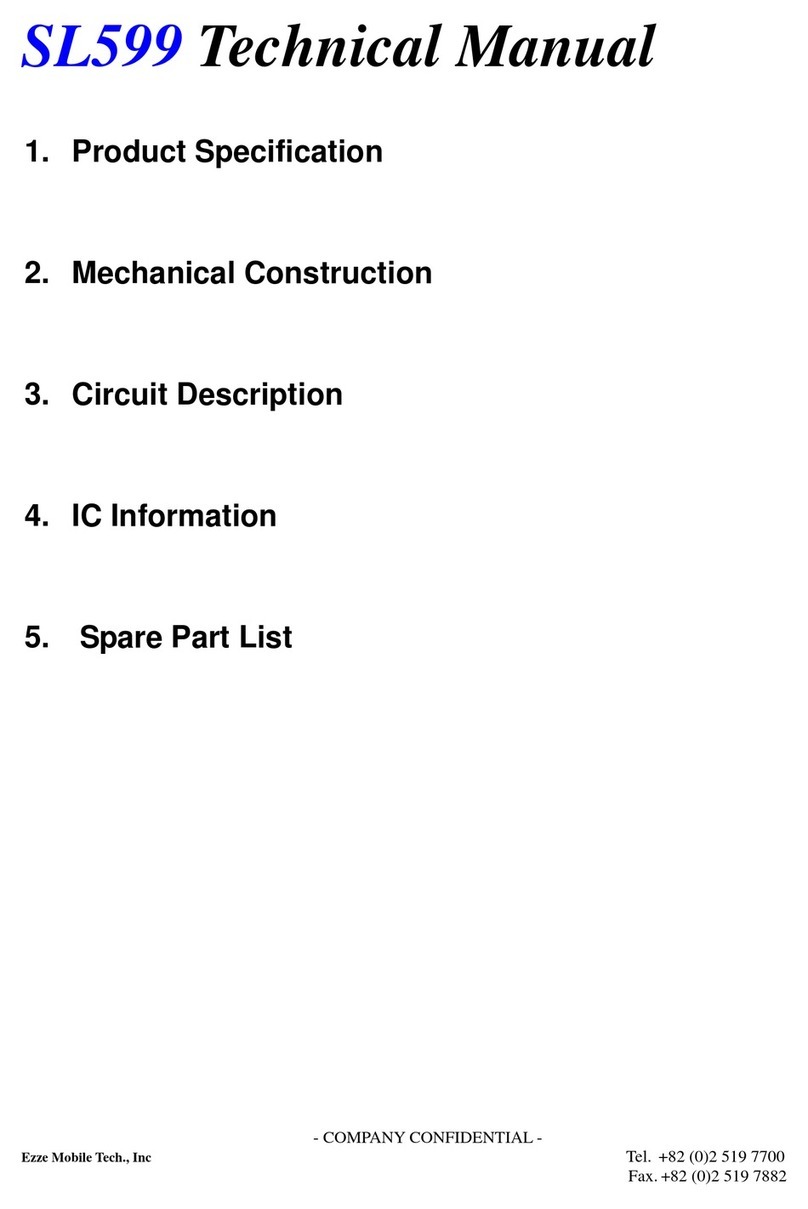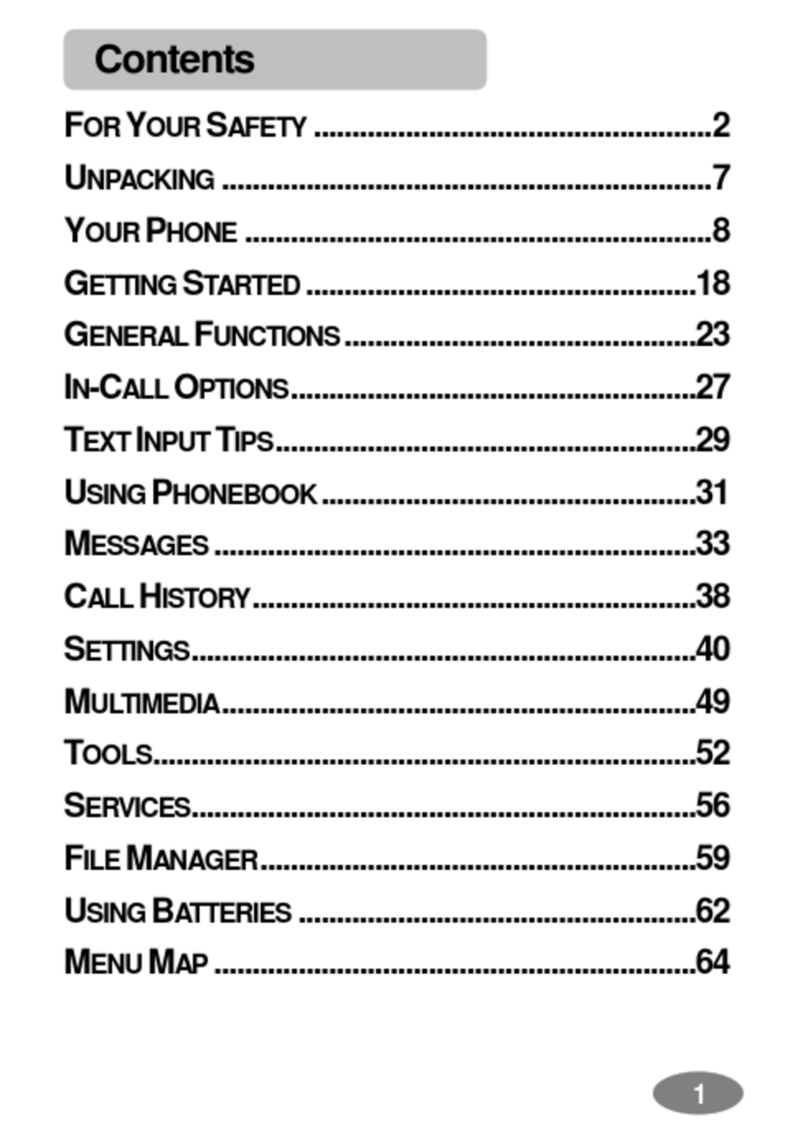
oven, stove, or radiator. The phone may explode when overheated.
When the phone or battery gets wet, phone repairs are no longer
guaranteed by the manufacturer's warranty, even if the warranty for
your phone has not expired.
If your phone has a flash or light, do not use it too close to the eyes of
people or animals. This may cause damage to their eyes.
Use only the supplied or an approved replacement antenna.
Unauthorized antennas or modified accessories may damage the
phone and violate regulations governing radio devices.
Do not attempt to open the phone’s casing. Non-expert handling of the
phone may cause damages to your phone.
If the phone or any of its accessories are not working properly, take
them to your nearest qualified service center. The personnel there will
assist you, and if necessary, arrange for the phone to be repaired.
Using the earpieces or stereo headset for extended time can cause a
serious damage to your hearing. Exposing sound higher than 100db for
a long time, you will get possible ear damage that could results from
extensive usage of audio playback. You are strongly advised to check
the volume level to medium before using.
Do not use the phone while charging the phone. You may be electric-
shocked if you use the phone while charging the phone with the USB
data cable or the battery charger. Make sure to disconnect the USB
data cable or the charger before using the phone.
Don’t expose your phone to water, rain, extreme humidity, sweat, or
other moisture.
Extreme heat or cold ;Avoid temperatures below -10°C/14°F or above
45°C/113°F
Don’t expose your phone to dust, dirt, sand, food, or other
inappropriate materials.
Operating Environment
Remember to follow any special regulations in force in the area you are
in, and always switch off your phone whenever it is forbidden to use it,
or when it may cause interference or danger. When connecting the
phone or any accessory to another device, read its user’s guide for
detailed safety instructions. Do not connect incompatible products.
Operation of any radio-transmitting equipment, including cellular
phones, may interfere with inadequately protected medical devices.
Consult a doctor or the manufacturer of the medical device if you have
any questions. Other electronic equipment may also be subject to
interference.
As with other mobile radio-transmitting equipment, you are advised that
for satisfactory operations and personal safety, the equipment should
only be used in the normal operating position.
Always switch off the phone when refueling (service station). You are
reminded of the need to observe restrictions on the use of radio
equipment in fuel depots (fuel storage and distribution areas), chemical
plants or where blasting operations are in progress.
Do not store or carry flammable liquids, gases or explosive materials in
the same compartment as the phone, its parts or accessories.
Switch off your cellular phone when in aircraft. The use of cellular
phones in aircraft is illegal and may be dangerous to the operation of
the aircraft or disrupt the cellular network. Failure to observe these
instructions may lead to the suspension or denial of cellular telephone
services to the offender, legal action or both.
As with other mobile radio transmitting equipment, users are advised
that for the satisfactory operation of the equipment and for the safety of
personnel, it is recommended that the equipment should only be used
in the normal operating position (held to your ear with the antenna
pointing over your shoulder).
Electronic devices
Most modern electronic equipment is shielded from radio frequency (RF)
signals. However, certain electronic equipment may not be shielded
against the RF signals from your wireless phone. Consult the
manufacturer to discuss alternatives.
Pacemakers
Pacemaker manufacturers recommend that a minimum distance of 15 cm
(6 inches) be maintained between a wireless phone and a pacemaker to
avoid potential interference with the pacemaker. These recommendations
are consistent with the independent research and recommendations of
Wireless Technology Research. If you have any reason to suspect that
interference is taking place, switch you’re your phone immediately.
Hearing aids

